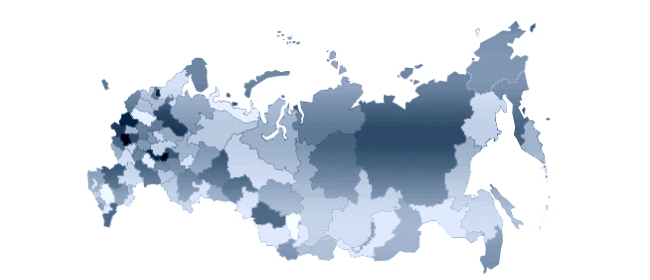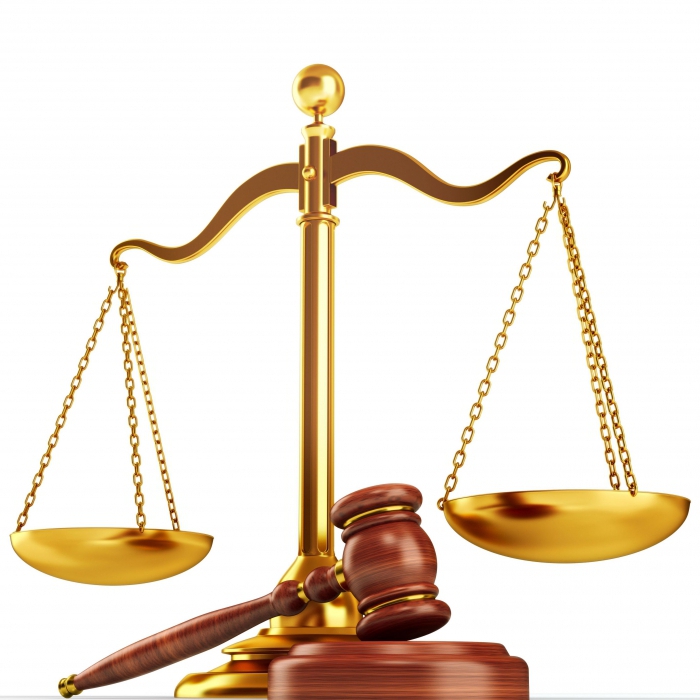Russia has created a multi-stage system of political governance. This feature is traced in a variety of aspects. So, authorities in the Russian Federation are divided into state and municipal. In some cases, they are considered in a single context. But, according to the Constitution, state and municipal authorities in Russia must function independently. What are the criteria for distinguishing them?
Correlation of state and municipal government
Before exploring the functions of state and municipal government, we will consider how the two concepts are related. What is the principle of the need to distinguish between them?
There is an opinion that state and municipal government should be considered in different contexts due to the fact that the Constitution of the Russian Federation stipulates provisions on which both of them should be divided. That is, based on the logic of the basic law of Russia, state and municipal government are two independent systems for the implementation of political power. But what are the actual criteria for distinguishing them?
This may be, first of all, the mechanism of formation of power bodies. If we talk about municipal government bodies - those that operate in cities and regions of the Russian Federation, then the corresponding positions in them are occupied by people, determined on the basis of the will of the citizens of the respective settlements. The mayor of the city or the chairman of the city council cannot be appointed by the president of the Russian Federation. In turn, state authorities may well be formed with the direct participation of federal structures. So, for a long time, the heads of Russian regions were appointed by the president of the Russian Federation.

Another criterion that predetermines the distinction between such concepts as municipal and state administration is the tasks and functions of the corresponding power structures. In the first case, we are talking about the effective management of local economic and political processes. Job municipal authorities authorities in a particular city does not imply a direct influence on the corresponding activities in other settlements, even neighboring ones.
Public Administration Functions
In turn, the functions of the state and public administration are much wider. They involve solving problems on a national scale, which in some cases go to the international level. Decisions made at the government level, as a rule, affect all local administrative-political units. It can be noted that in the system of organization of power in the Russian Federation, the functions of the state and public administration are divided into 2 levels - federal and regional. Part of the authority of the political center is thus given to the subjects of the Russian Federation. The main motive here is the best adaptability of regional authorities to solving problems in specific territories, their knowledge of local factors affecting the success of achieving their goals.
Some functions of state and municipal administration may coincide. First of all - in both cases - the key social task is set before the authorities, which is to ensure the stable development of the state, a high standard of living of citizens, and the implementation of economic modernization.The general functions of state and municipal government are the effective collection of taxes, as well as the competent distribution of budget funds.
Thus, the two described mechanisms for the realization of political power can be considered both in unified contexts and subject to a separate distribution of functions.
Is the municipal government subordinate to the state?
This issue raises debate among lawyers and experts. On the one hand, the concept and functions of public administration, based on the provisions of the Constitution of the Russian Federation, should be considered separately from the corresponding characteristics of municipal mechanisms. Any law that obligated, conditionally speaking, the mayor of the city to report directly to the president of the Russian Federation, could be considered as contrary to the Constitution of Russia.
At the same time, the functions of state administration in terms of budget policy and the implementation of federal programs often imply accountability of municipalities to state structures. If some funds from state reserves were transferred to the local budget level, then they should be spent in a targeted way. Similarly, federal programs should be effectively implemented at the municipal level.
Thus, the concept and functions of public administration in the Russian Federation may, on the one hand, not assume any subordinate role of municipalities, and on the other hand, in practice, communications between authorities at different levels can be characterized by the accountability of local structures to federal (or regional, which are also part of the system government authority). In turn, the authorities of the constituent entities of the Russian Federation - ministries, territorial representations of agencies and services are fully accountable to the political center. At the same time, regions can be characterized by greater than municipalities budget independence relative to federal financial resources.
A pronounced subordination in correlating the powers of state and municipal authorities is observed in the field of legal regulation. Local laws must fully comply with those adopted by the political center. The city parliament cannot issue an act that would be contrary to the provisions of regional or federal sources.
The structure of state and municipal government
To begin, consider the basic elements of the structure that form the institution of state and municipal government in Russia. These can be considered: subject, object, as well as content. What is the specificity of the first element?
The subject of state (municipal) government is considered to be a certain authority: the mayor's office, city council, parliament, regional or federal power structure. They can act within their powers, which are enshrined in various sources of law.

The objects of state or municipal government can be considered social relations between citizens, organizations and authorities - federal, regional, municipal. The relevant legal relations are regulated through the publication of laws and norms, also distributed at the three indicated levels. These sources of law should be public in nature.
The functions of public administration or the corresponding characteristics of municipal political mechanisms should be determined by citizens themselves in the course of democratic procedures, or by competent entities to which people delegate the right to carry out the necessary activities.
Content management at the state and municipal levels
Consider the specifics of the content of the considered varieties of political mechanisms. What should you pay attention to first of all?
The content of the respective activities is largely determined by individual functions of government. Such as, for example, control over budget execution. In this case, the content of public administration will include procedures for setting goals and solving problems related to optimizing the collection of taxes or increasing the efficiency of the distribution of financial resources.
The content of the political mechanisms in question may include procedures for the formation of state or municipal authorities. As a rule, in this case we are talking about certain democratic mechanisms involving the participation of citizens. Let's consider their essence in more detail.
Democratic mechanisms in state and municipal government
So, the functions of public administration of the Russian Federation can be performed only if the legitimate formation of the relevant authorities. In the Constitution of Russia and other key legal acts, the leading role in these activities is assigned to citizens. Their will is the determining factor in the formation of state and municipal authorities, in the appointment of certain persons to relevant posts.

As for the local political structures, the democratic procedures that are provided for by Russian legislation, in this case, can be implemented through two main mechanisms. Firstly, these are direct elections of the executive bodies of municipal authority. This is most often the city administration or city hall. In a direct mechanism, citizens themselves decide who will be the mayor. Secondly, this is the appointment of the head of the city administration by the parliamentary structures of the corresponding settlement. In turn, the deputies of the local legislative assembly in this case should be elected by citizens. Thirdly, both branches of government in the city - executive and legislative, can be formed with the direct participation of citizens.
The choice of a specific mechanism depends on the characteristics of the culture of political participation in a particular locality, on the specifics of the distribution of powers between the city hall and parliament in a particular city.
The functions of public administration, as we noted at the beginning of the article, are usually much wider than in the case with the corresponding characteristics of municipal political mechanisms. Therefore, a very active participation of citizens in the formation of branches of government at the level of a region or a political center is assumed. In the first case, residents of a particular constituent entity of the Russian Federation can choose both the head of the region and parliamentary deputies. If it is a political center, citizens choose the president who heads the executive branch of government, and also form the composition of one of the chambers of the Federal Assembly - the State Duma.
Legislative and executive bodies at various levels
We studied how the bodies of state and municipal authorities are formed in Russia. We found that in both cases it is about creating both legislative and executive structures. But will functions between them be different if we compare the corresponding political institutions at different levels of government? How similar are the functions of executive bodies of state administration with those that characterize municipal structures?

If we are talking about federal and regional structures, their main task is to ensure the effective application of the provisions of the sources of law adopted at the legislative level by the political center and the parliaments of the constituent entities of the Russian Federation, respectively. In turn, municipal executive bodies should put into practice laws approved by local legislative structures - for example, city councils.Thus, the spheres and functions of state administration and municipal in terms of correlation of legislative and executive bodies as a whole are very similar. The main difference between them is in the levels of sources of law. Municipal executive bodies ensure the implementation of only local laws and regulations. Regional and federal - those sources of law that are adopted by the parliaments of the subject of the Russian Federation and the political center, respectively. The main criterion that the laws of the first type must comply with is the absence of contradictions with the provisions of sources of law of the second and third types.
Are the legislative structures of municipalities accountable for functioning at the subject or political center level? It can be noted that local parliaments in the Russian Federation can operate almost completely autonomously. We have defined the most important criterion that their activity should correspond to - laws issued by municipal parliaments should not contradict state ones, which are adopted at the regional or political center level.
The same can be said of the executive branch in municipalities. Mayors of cities have no direct accountability to regional and federal structures. However, in practice, the participation of municipalities in federal and regional programs may imply the formation of additional mechanisms for the responsibility of local executive bodies to state ones.
What are the specifics of the judicial authorities at the municipal, regional and federal levels? It can be noted that the corresponding branch of political governance in the Russian Federation is characterized by much more strict subordination than when comparing the legislative and executive structures (to a greater extent, of course, there is a similarity with the specifics of communication of the second type of institutions). The decisions of the courts of first instance, localized in specific municipalities, can be reviewed at the level of regional structures, and after that - federal ones.
The specifics of local government
Having studied what constitute the structure and functions of public administration, we can consider the specifics of the political mechanisms that are implemented specifically at the municipal level.

So, to begin with, we examine the interpretations of the corresponding concept, which are common among Russian researchers. The concepts of "local government" and "municipal government" can be considered synonymous. To define the relevant terms, we can refer to the provisions of the European Charter on Local Self-Government. So, the concept under consideration can be interpreted as a right, as well as the real ability of local authorities to regulate a significant amount of public affairs and manage them, operating within the framework of the law, with readiness to take responsibility and act in the local interests.
Municipal management, as we noted above, is separated from the state in the Constitution of the Russian Federation. In fact, its independence can be traced not in all areas, but in many aspects.
The main criteria for local self-government that are highlighted by Russian researchers:
- autonomy of the administrative control of the municipal authority over the local territory;
- lack of strict accountability of the municipal authority to the state;
- participation of citizens of a city or district in local political processes, guarantees of providing social protection to residents of the municipality by local authorities.
Correlation of state and municipal service
The next aspect, in which it will be useful to consider the functions of the public administration system, as well as municipal political mechanisms, is the specificity of the corresponding types of civil service.The fact is that not all positions in power structures at one level or another are elective. A significant percentage of employees of the respective institutions are appointed to their positions under official contracts.
How big is the difference between state and municipal service? In principle, the pattern here is similar to that which characterizes the correlation of the executive and legislative branches of government at different levels. Civil servants - both in public and municipal positions, in principle, can be engaged in the same work. Their positions can sound exactly the same. This is not surprising, since the key functions of government and municipal political mechanisms, in principle, coincide.

Regarding Russian employees - they are faced with almost identical requirements in terms of professional competence when entering the service and concluding an appropriate contract, regardless of the level of functioning of a particular authority. In turn, the practical content of the activities of employees in state and municipal posts may vary due to the difference in the legal framework that forms the basis of the work of specialists in the respective posts. It is assumed that civil servants will rely mainly on federal and regional laws in their activities. Employees in relevant positions in municipal authorities will most often use local sources of law approved by the parliaments of cities and regions.
Civil servants in their activities, as a rule, are accountable to higher authorities. For example, a person working in the Ministry of Finance of the Republic of Bashkortostan will have to coordinate his activities with the Ministry of Finance of the Russian Federation. In turn, the citizen occupying municipal office serving in the Committee on Finance, Tax and Credit Policy of Barnaul, will be required to obey the orders of the Ministry of Finance of the Russian Federation only if it is expressly prescribed by one or another source of law.
Thus, the basic functions of public administration are also reflected at the level of municipal political processes. However, the direct content of activities at different levels may be dissimilar due to the different legal framework that underlies the activities of employees and elected officials.
Public administration at the enterprise
In Russia, a significant percentage of enterprises are owned by the state. What are the specifics of management organization in such firms? The functions of public administration of an organization engaged in certain commercial activities, of course, will significantly differ from those that are characteristic of political processes. In some aspects, a correlation can be found between them - for example, when it comes to solving social problems related to the employment of citizens or the economic development of the region. But the functions of enterprise management carried out by the state will be characterized, first of all, by solving economic problems. Such as increasing the profitability of production, the search for new partners, suppliers, the development of promising sales markets, etc. In this sense, state-owned enterprises can use management schemes that are characteristic of private structures.

In state-owned enterprises, in the general case, it is not intended to form posts to which people are appointed under service contracts. As a rule, employees of the corresponding type of companies enter into employment contracts with the employer. In some segments of economic activity, the approaches of state and private enterprises are hardly distinguishable at all - for example, in the banking sector. The same can probably be said of the oil and gas sector.At the same time, in a number of cases, the functions and methods of public administration can nevertheless be introduced into management practices at state-owned enterprises. For example, this may relate to building relations between the managing structures of the company vertically - as this happens, for example, in the case of interaction between federal and regional authorities.
